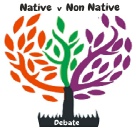





 Town Map
Town Map







Research into the varieties chosen
for the Tree Trail
One of the questions that is often asked is why the trees we considered led to those we now finally see in the tree trail - How did we choose them ? What were their characteristics that led them to be preferred above so many other varieties ? Perhaps especially why some of these trees are not native varieties and should non-native have been prioritised for consideration. The phrase “The Right Tree in the Right Place” is behind everything in the trail - whether it be a tree to cheer us all up in Winter or to provide the longest flowering season for pollinators; as well of course our awareness of the urban environment into which our trees are placed.
The main starting places for these questions lie in three main places;
> one is how the residents and visitors to the town would benefit from seeing these varieties at different times of the year;
> another would be how well the varieties have been suited to the urban environment in which we have placed them - whether their root structure would be invasive, whether their seeds and fruits would present problems for pavements and if the seeds would self germinate and create issues within the generally limited spaces we have selected for their positioning;
> a third would be how beneficial the trees selected will be to wildlife, to the people living with them and how they might contribute to the local ecology.
To do this it was sensible to take all the advice possible and as varieties were considered they were discussed with both the nursery arborists and with tree specialists in Dorset.
Two academic researchers were ;
Dr Andrew Hirons; a Senior Lecturer at University Centre Myerscough in Lancashire who teaches on full-time and online courses in Arboriculture and Urban Forestry - and with a specialism in tree biology and arboricultural practices.
And
Dr Henrik Sjöman; a Senior Researcher at the Swedish University of Agricultural Sciences and Scientific Curator at Gothenburg Botanical Garden. His work mainly focuses on developing knowledge of site-adapted plant use for urban environments.
Starting with the accepted fact that climate is changing we needed to look at how resistant to drought our trees should be; how attractive they would be to visitors and residents; how supportive of wildlife they would be - all of course along with the mature size of the trees.
Each of the trees has a short hyper-linked comment outlining the reasoning for its choice.
All the trees (and their positioning) on this tree trail have been discussed with arboreal specialists



Tree #1 - Prunus subhirtella ‘Autumnalis’
Tree #2 - Arctic Birch - ‘Snow Queen’
Tree #3 - Koelreuteria paniculata.
Tree #4 - Styrax japonicus
Tree #5 - Sorbus Commixta
Tree #6 - Gingko biloba (‘Saratoga’)
Tree #7 - Magnolia brooklynensis (‘Elizabeth’)
Tree #8 - Davidia Involucrata (Dove Tree)
Tree #9 - Cercis canadensis (‘Forest Pansy’)
Tree #10 - Parrotia persica ‘Bella’ (Persian Ironwood)
Tree #11 - Chitalpa tashkentensis (Desert Willow)
Tree #12 - Lagerstroemia - fauriei -Tuscarora (Crape Myrtle)






























 Town Map
Town Map
































